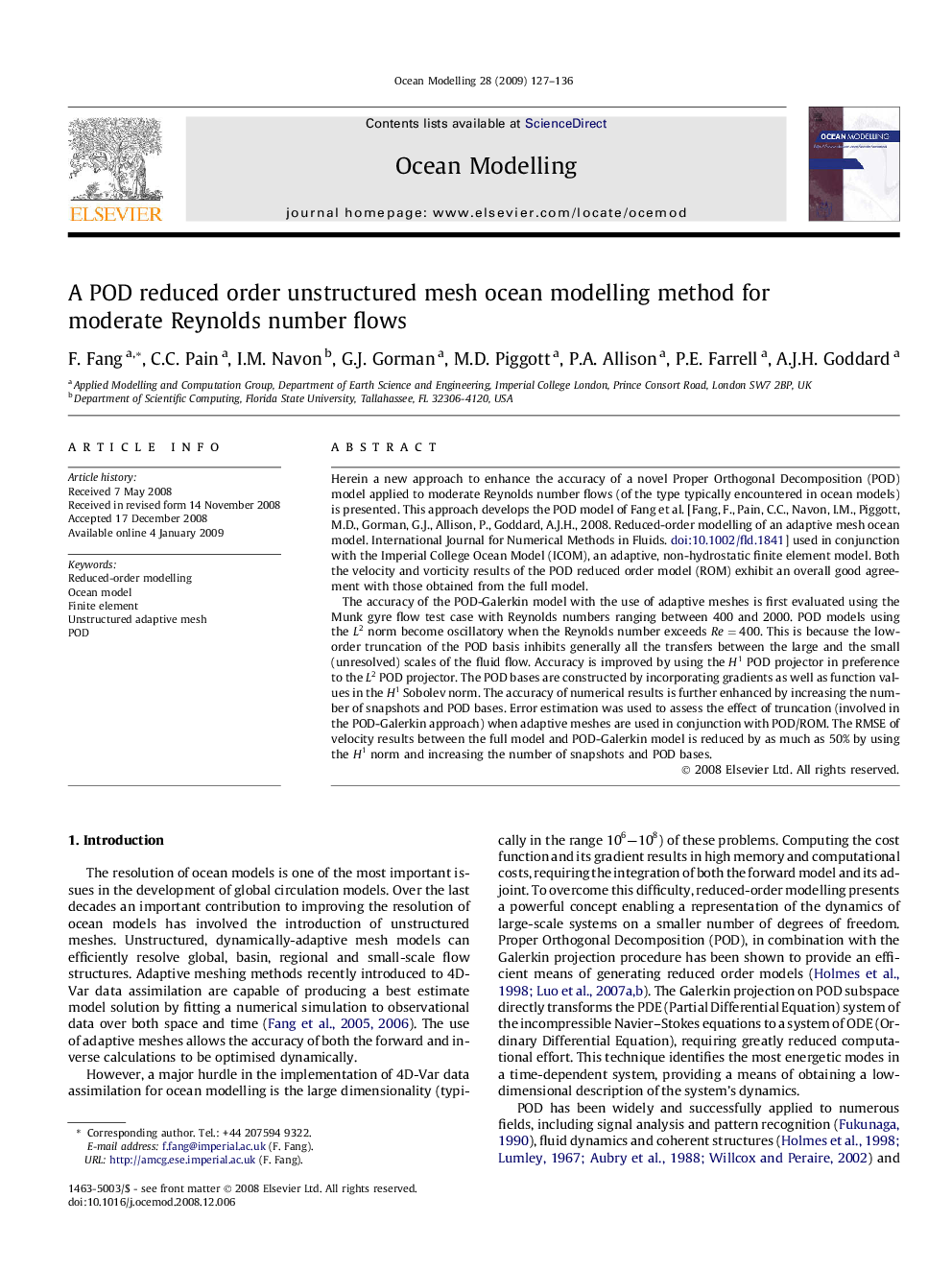| Article ID | Journal | Published Year | Pages | File Type |
|---|---|---|---|---|
| 4552625 | Ocean Modelling | 2009 | 10 Pages |
Abstract
The accuracy of the POD-Galerkin model with the use of adaptive meshes is first evaluated using the Munk gyre flow test case with Reynolds numbers ranging between 400 and 2000. POD models using the L2 norm become oscillatory when the Reynolds number exceeds Re=400. This is because the low-order truncation of the POD basis inhibits generally all the transfers between the large and the small (unresolved) scales of the fluid flow. Accuracy is improved by using the H1 POD projector in preference to the L2 POD projector. The POD bases are constructed by incorporating gradients as well as function values in the H1 Sobolev norm. The accuracy of numerical results is further enhanced by increasing the number of snapshots and POD bases. Error estimation was used to assess the effect of truncation (involved in the POD-Galerkin approach) when adaptive meshes are used in conjunction with POD/ROM. The RMSE of velocity results between the full model and POD-Galerkin model is reduced by as much as 50% by using the H1 norm and increasing the number of snapshots and POD bases.
Related Topics
Physical Sciences and Engineering
Earth and Planetary Sciences
Atmospheric Science
Authors
F. Fang, C.C. Pain, I.M. Navon, G.J. Gorman, M.D. Piggott, P.A. Allison, P.E. Farrell, A.J.H. Goddard,
